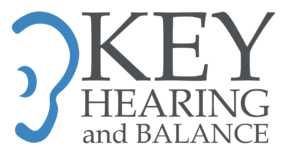Hearing Aid Selection
Key Hearing Audiology Clinic has a very wide selection of hearing aids to choose from, for both children and adults. We offer a full range of hearing aid products which include digital, programmable, and conventional technologies; all in a complete line of styles, from the smallest completely In The Canal hearing aids to the more durable or higher power Behind The Ear hearing aids.
Features such as telephone switches, remote controls, and directional microphones are available on many products.
Hearing Aid Manufacturers
Unlike many corporate-owned clinics, Key Hearing does not have a conflict of interests when it comes to hearing aid selection. We are dedicated to fitting the right hearing aids to our patient's individual needs, and this can only be done by being up-to-date on the latest and greatest solutions offered by a wide array of manufacturers.
Key Hearing Audiology Clinic offers hearing aid products from all the top international manufacturers, some of whom you can visit online: Starkey, GN ReSound, Unitron, Oticon, Phonak, Siemens, Widex, Rexton, and many more.
Hearing Aid Styles
Realize that any circuitry can be put into any style/size of hearing aid. Each size has its benefits and detriments. Larger style aids provide better access to manual "options" that can be available with the different types of circuitry, but there are trade offs for this access. By the same token, smaller style aids may not have the same access to options, but can be more versatile for the active individual. The appropriate style can be determined in close consultation with your audiologist and by examining your hearing loss, lifestyle and individual hearing needs and circumstances.
Behind the Ear (BTE)Appropriate for all degrees of losses. Best for severe to profound hearing losses. |
||
|---|---|---|
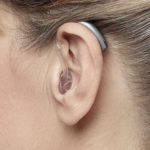 |
Pros:
|
Cons:
|
In the Ear (ITE)Appropriate for all degrees of hearing loss. Works well for those with severe hearing losses who desire an “in the ear” instrument. |
||
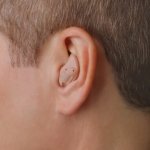 |
Pros:
|
Cons:
|
In The Canal (ITC)Appropriate for mild to moderately-severe hearing impairments. Not appropriate for profound losses. |
||
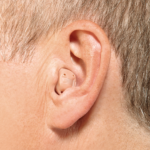 |
Pros:
|
Cons:
|
Completely In Canal (CIC)Best suited for mild to moderately-severe hearing impairments. |
||
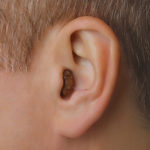 |
Pros:
|
Cons:
|
Hearing Aid Options
Hearing aids are exactly what the name states, an aid to assist you in hearing. It is meant to improve your hearing, not correct it. In its simplest form, the hearing aid is simply a microphone, amplifier, and loudspeaker system, fit into the size of a nutshell. You may ask: “Why does it cost so much if that's all it is?” Imagine your whole high-end 7.4.2 Atmos home entertainment surround sound system (minus the nest of cables) fitting in your ear… Suddenly a hearing aid becomes far more impressive. Obviously something is lost in size reduction, but even the simplest hearing aids have amazing cutting-edge technology that warrants appreciation. In a hearing aid, the technology is independent of the size of the aid. It can be grouped in three main categories:
Hearing Aid Circuitry Options
- Conventional: your standard hearing aid system that has stood the test of time. The person fitting your hearing aid adjusts most through the use of trim pots accessed with a small screwdriver. The hearing aid’s automatic response is at best limited so volume adjustment is manually accessed through a volume control. It is a very appropriate circuitry for someone who is almost exclusively home and just needs assistance hearing family members, the phone or the TV. Limitations occur if the person has dexterity or cognitive problems that limits their ability to manipulate the volume control or telephone switch.
- Programmable circuitry: Often confused with the digital hearing aids, programmable circuitry is a hybrid between the conventional circuitry and the digital. The circuitry is similar, but generally more advanced than the conventional with one important difference, a computer chip is now coupled to the circuit, allow direct access and more precise manipulation of the hearing aid response to sound at the fitter’s location! It allows the hearing aid a more automatic response, many times eliminating the need for a volume control unless desired by the patient and a increased options for hearing aid response including multiple memories to address the issue of background noise and directional microphone arrays. It is the opinion of many professionals that this will soon become the standard for hearing aids if it has not become so already.
- Digital circuitry: The top of the line of hearing aid circuits. The difference between the digital versus the programmable is all in the computer chip placement. While before the computer chip was coupled to the circuitry, with the digital, it is at the beginning of the circuitry resulting in the acoustic signal to be translated into computer “binary” code. This allows more precise control over the sound processing resulting in a cleaner sounding, faster responding instrument. It still is not normal hearing, but to many, the sound quality is much improved and the faster acting response allows them to “forget” about the hearing aid enough to feel comfortable encountering various noise situations without worry. It is a very appropriate circuit for people who enjoy an active lifestyle that results in diverse environments, meetings, or business people who do not wish to “fuss” with the hearing aid but wish the clarity of sound.
Assistive Listening Devices
We also feature selection of assistive listening and alerting devices to improve communication and listening skills for specific situations. These include FM Systems, TV Infrared Listening System, Clarity telephone, Pocket Talker personal amplification system, Shake Awake alarm clock, and Alertmaster Systems (for alerting to doorbells, crying babies, etc).
Other products include batteries, accessories, ear protection, swim plugs, musicians' ear plugs, shooters plugs, pilot partners.
